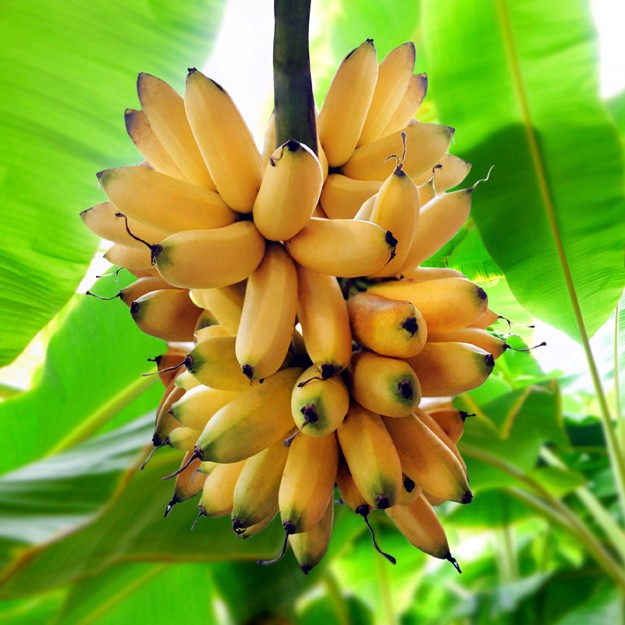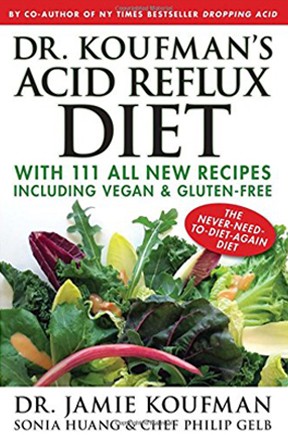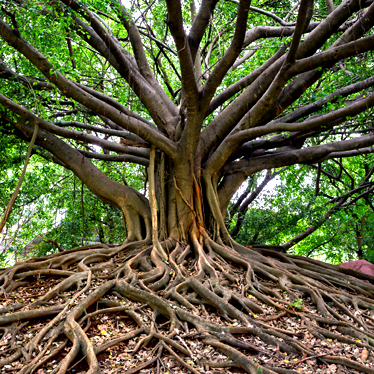At-A-Glance
- With the annual production of 120 million tons of bananas, bananas are the most popular fruit in the world. And we Americans love bananas … we eat 112 bananas per capita per year, consuming almost 20% of the world’s supply.
- Nutritionally, one medium banana provides about 110 calories, with 1 gram protein, 28 grams carbohydrate, 15 grams sugar, 3 grams fiber, 450 mg. of potassium, as well as some magnesium and vitamins A, B6, and C.
- At pH 5.7, the banana is one of the best fruits for people with reflux, even those who are doing a Reflux Detox. In addition, bananas are excellent in smoothies and other recipes for the purpose of pH-balancing. Unfortunately, the usually reflux-friendly banana is a reflux trigger food for about 5% of people.
Bananas may have been the world’s first cultivated fruit. Archeologists have found evidence of this in New Guinea dating back to 8,000 B.C. The banana plant is a tree-like perennial herb; and today, over 150 nations produce 120 million tons of bananas annually. The top producing countries are India, China, Indonesia, Brazil, and Ecuador. In terms of the rank of bananas in big-picture global agriculture, banana production ranks 5th after corn, wheat, rice, and soybeans.
Banana production has increased more than 300% in the last fifty years. And in addition to being a major export, bananas are a staple food for many tropical nations. By the way, the statistics on banana production don’t usually separate bananas and plantains; however, the ratio of bananas to plantains is roughly 3:1.
Bananas were first introduced to the U.S. in the mid-1800s, and they got a big boost from the Centennial Exhibition of Philadelphia of 1876; there bananas were sold for 10 cents and most popular variety back then was the “Big Mike.”
While there are over 1,000 varieties of bananas, almost all that are grown, exported, and consumed today, are Cavendish bananas. Where is Big Mike now? Alas, this banana variety is no longer available in the U.S.
Banana Nutrition & Acid Reflux?
Nutritionally, one medium (4 ounce) ripe banana provides about 110 calories, 1 gram protein, 28 grams carbohydrate, 15 grams sugar, 3 grams fiber, 450 mg of potassium, and small amounts of vitamins A, C, and B6. The riper the banana, the more sugar it contains; and there is no fat, salt or cholesterol in bananas. The U.S. Department of Agriculture has detailed info on what’s in a banana.
At pH 5.7, the banana is one of the best fruits for people with reflux, even those who are doing a Reflux Detox Diet. In addition, bananas are excellent in smoothies and other recipes for the purpose of pH-balancing … how does that work?
If you buy an old-fashioned ice tray and put alkaline water pH 9.5 in it … and then make a smoothie with a banana, four of those alkaline ice cubes, and some milk (e.g., cow, rice, soy, almond), then you can put anything else you want (excluding citrus) in that smoothie, because the basic mixture is already alkaline enough to pH-balance somewhat-acidic other ingredients like apples, pears, peaches, cherries, etc.
A cautionary banana tale: A 58-year-old former patient, who had been well without reflux for years, came to see me complaining that she was having mild heartburn every morning at about 10:00 a.m. I asked what she had for breakfast; she told me that she had oatmeal with raisins and a banana every morning. I told her to stop the banana, and her symptoms went away.
Unfortunately, the usually reflux-friendly banana is a Reflux Trigger Food for about 5% of people.
Where Do Our Bananas Come From and How Are They Processed?
There are very few bananas grown in the U.S., almost all imported here from Guatemala, Ecuador, and Costa Rica. Export bananas are picked green, and ripened in special rooms upon arrival in the destination country, that is, here. These rooms are air-tight and filled with ethylene gas to induce ripening.
As you will see below, ethylene is naturally-occurring in bananas … and actually in other fruits such as apples, pears, melons, tomatoes, and peaches. Many other fruits and vegetables are ethylene sensitive, e.g., avocado, broccoli, cabbage, cauliflower. So, bananas can make other fruits ripen faster because they release ethylene … fruits and vegetables that are in close proximity ripen faster.
Banana Ripening: Not Yet … Not Yet … Too Late!
Fruit ripening is the initiation of fruit senescence. It is an irreversible, genetically-programmed process that moves from unripe to ripe, to yield an attractive and edible fruit. The changes are biochemical, and a natural plant hormone, ethylene, is the initiator and accelerant. Ethylene causes ripening by breaking down cell walls, changing the color and texture of the banana, converting starches to sugars, and dissipating acids.
In the case of the banana, ripening also changes the odor of the fruit. An ester called isoamyl acetate gives banana its distinctive smell and taste … and the riper the banana, the more of it. Beyond, bananas, isoamyl acetate is widely used to flavor other foods, attract bees, and improve the smell of everything from perfumes to shoe polish.
Want to make your bananas ripen faster, put them in a paper bag. Want to ripen them more slowly? Keep them away from other fruits and vegetables and refrigerate them … but if they already have brown spots, it’s too late.
Health Claims for Bananas
The Internet has dozens of articles touting the health benefits of bananas including lowering blood pressure and the risk of heart attack and stroke, and decreasing the risk of getting certain cancers. Allegedly, it can also help bone health, improve muscle function, prevent kidney stones, improve immune system function, digestive health, prevent constipation, and so on.
I did a PubMed search for health benefits of bananas, and while there were some articles that made some health claims, I felt that the data and conclusions of those papers were soft and not very compelling.
Banana Fun Facts
Since 1961, with climate change (global warming), banana yields have increased by an average of 37% … data from 27countries that supply 86% of the world’s bananas.
If you have an unripe avocado at home, you can speed up the ripening process by putting it in a paper bag with a banana; this speeds ripening because of the ethylene emitted by the banana. And this works with most other fruits and vegetables, too.
Green banana peel is eaten in many parts of the world, though it’s not very commonly here in the West. The peel is touted to be packed with nutrients, including vitamin B6, vitamin B12, magnesium, and fiber.
Commercial bananas have been bred to contain defective genes that will not allow them to produce mature seeds, and so they are sterile.
Don’t put ripe bananas in the refrigerator, the skin quickly blackens and makes them look pretty unappetizing … although the fruit inside remains unaffected.
The top 10 most popular fruits in the U.S.: (1) bananas; (2) strawberries; (3) grapes (4) apples (5) watermelon; (6) oranges; (7) blueberries; (8) lemons; (9) peaches; (10) avocados.









